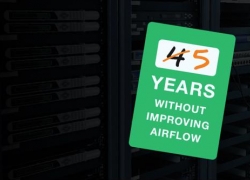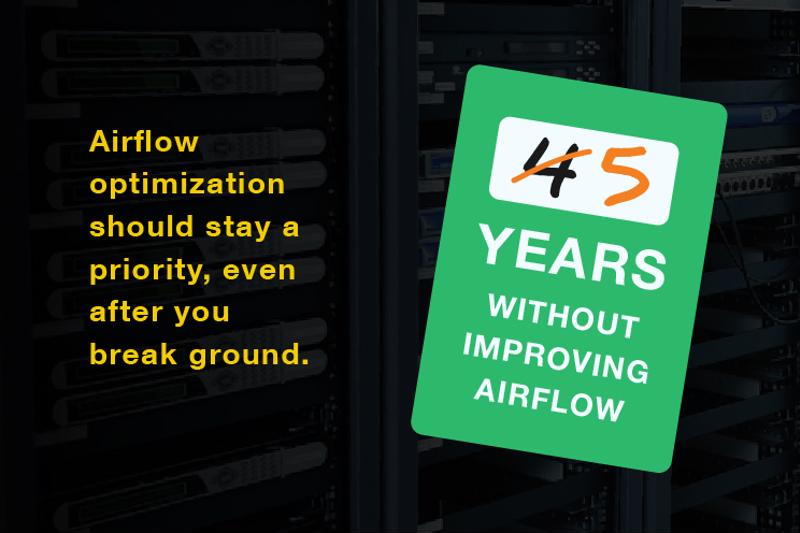Facilitating efficient airflow in your not-so-new data center
Facilitating efficient airflow in your not-so-new data center

Airflow optimization in the data center is like New Year's resolutions: It starts off strong, but the follow-through often leaves a lot to be desired.
Case in point, while 80 percent of data canters use computational fluid-dynamics (CFD) software to track and optimize airflow when designing their facilities, that usage rate dips dramatically in the years following the ribbon-cutting ceremony, according to Data Center Journal.
And we get it – many of us scale back going to gym by the middle of February. But inadequate airflow management is the No. 1 source of hotspots in the data center, as bypass air and recirculation airflow disrupt the flow of cool air through racks and the expulsion of exhaust into return plenums, respectively. Just because your facility airflow was fine-tuned for these issues on day one doesn't mean it's still optimized by day 1,000. Facility conditions change over time, and your airflow management needs to respond in kind.
If you're overwhelmed with the idea of re-optimizing airflow, then take a deep breath and relax. It's a lot easier than you think.
Start obvious: If you have CFD, use it regularly
"Visualize pockets of warm air as they form in your facility."
The ability to create CFD models is one of data center infrastructure management's (DCIM) greatest gifts to the facility manager. Simple colors (blue, green, orange and red) indicate precisely when and where warm pockets develop in your facility, helping you to identify sources of hotspots, and also making it easier to prescribe a fix – whether that's replacing an old blanking panel or floor tile or reorienting airflow for your top-of-rack switches.
Failure to regularly re-optimize your facility's airflow doesn't just increase the risk of overheating equipment – it also deteriorates data center cooling efficiency. There's both good and bad news here. The good news is that, more likely than not, your computer room air conditioners (CRACs) are fine, which is great when you consider that their replacement represents an exorbitant cost. The bad news is that increasing cooling capacity in response to waning airflow conditions is like adding Band-Aids to a cut that keeps getting bigger: Treating the symptoms won't solve the problem. Not to mention, cooling accounts for about 40 percent of the energy used in data centers. So if it's a better PUE ration you're after, you certainly won't get there by cranking the A/C.
Step one to solving this problem is to figure out why the data center you optimized for airflow four years ago is developing hotspots and constantly demanding more cooling capacity. The next step is to do something about it.

Contain your heat, keep your cool (literally and figuratively)
Poor airflow typically stems from the inability to keep cold and hot air from mixing, and this can be caused by two core factors:
- Distance from the cool-air source
- Improper containment of exhaust
If the cool-air supply reaching your equipment is insufficient, there won't be enough pressure to expel exhaust, so equipment will start to draw in the nearby warm air. Similarly, if you don't properly isolate your cold and hot aisles, cool air may pass around your IT load (aka bypass airflow) and mix with hot air. Consequently, your equipment will pull from a warm air supply (aka, recirculation air).
To solve these problems, you don't have to spend a month rearranging your cabinets or replacing every blanking panel in your facility. Instead, retrofit your higher-density racks with active containment chimneys that capture exhaust and expel it directly into the return plenum. Pressure sensors embedded in these chimneys are connected to internal fans, which adjust RPM to maintain zero pressure. This ensures that your equipment more effectively draws in cool air even when it's farther from the source so you don't have to increase cooling capacity. Simultaneously, exhaust that might otherwise linger around the IT load and re-circulate is expelled with no sweat at all.
Now about those New Year's resolutions ...



